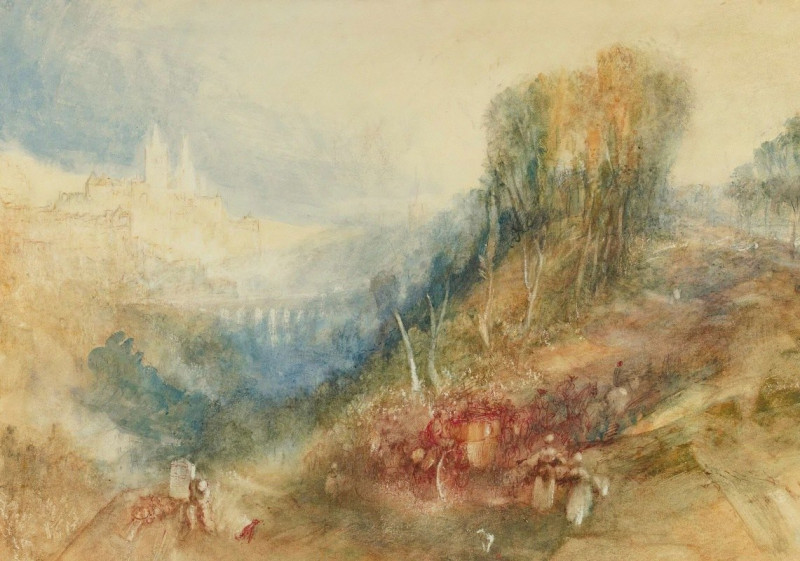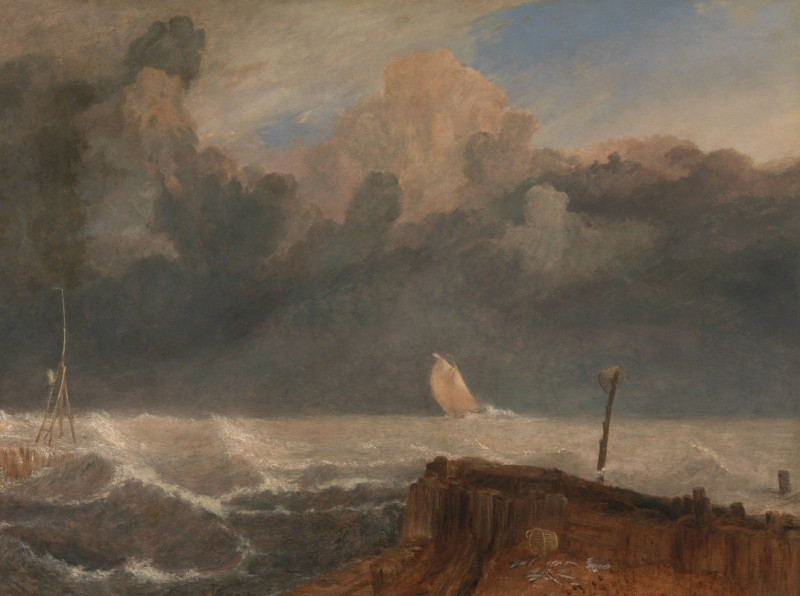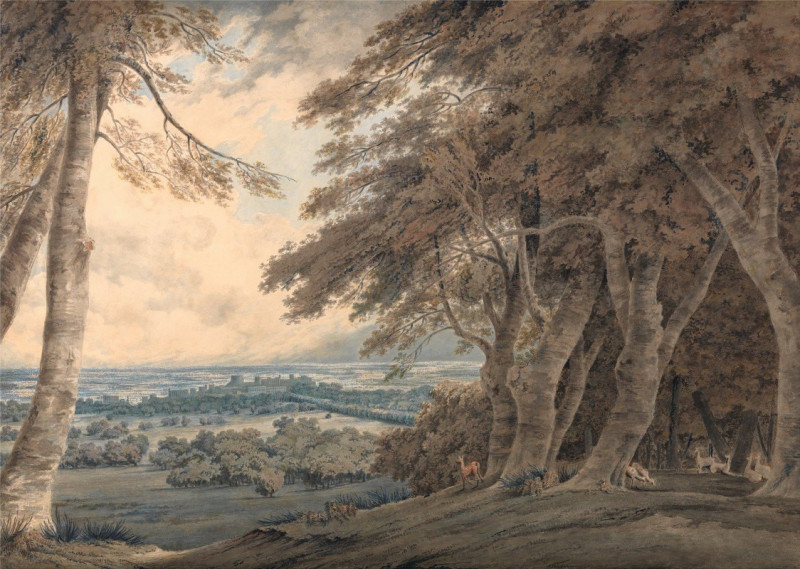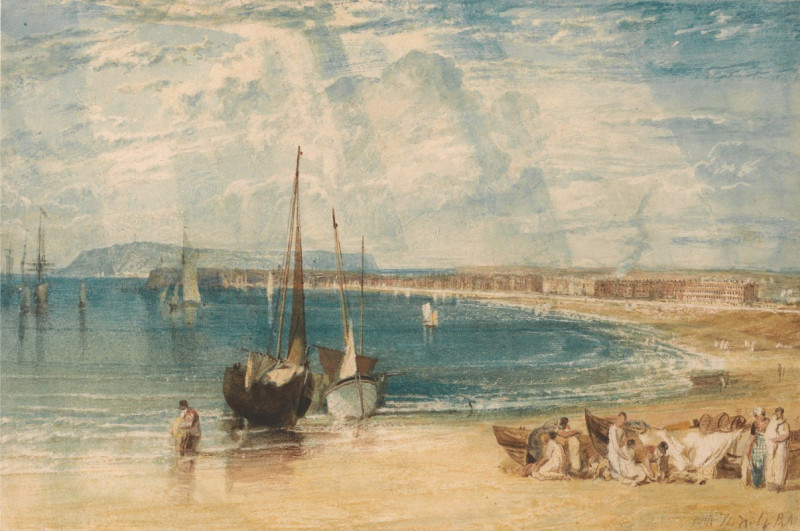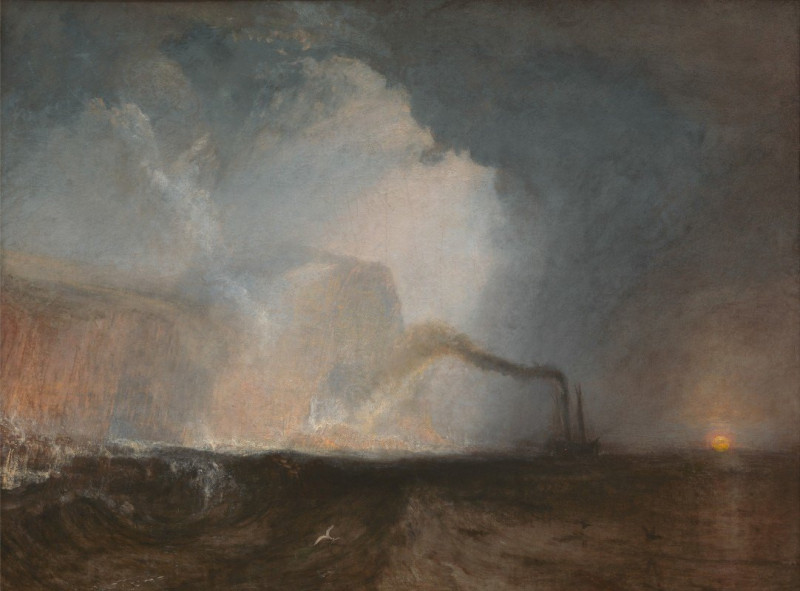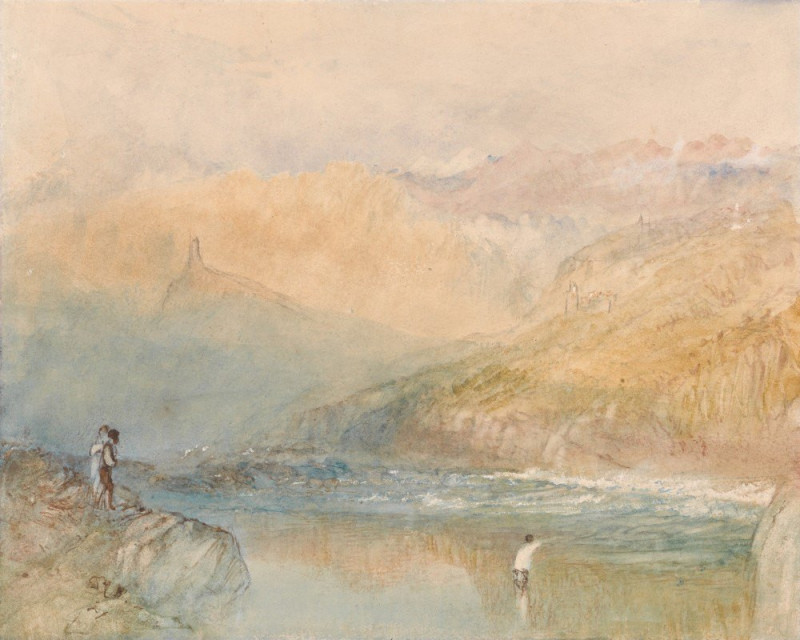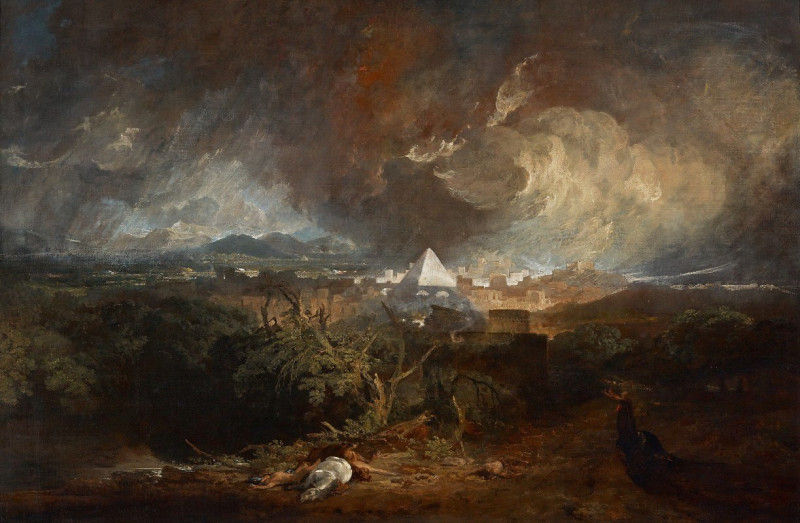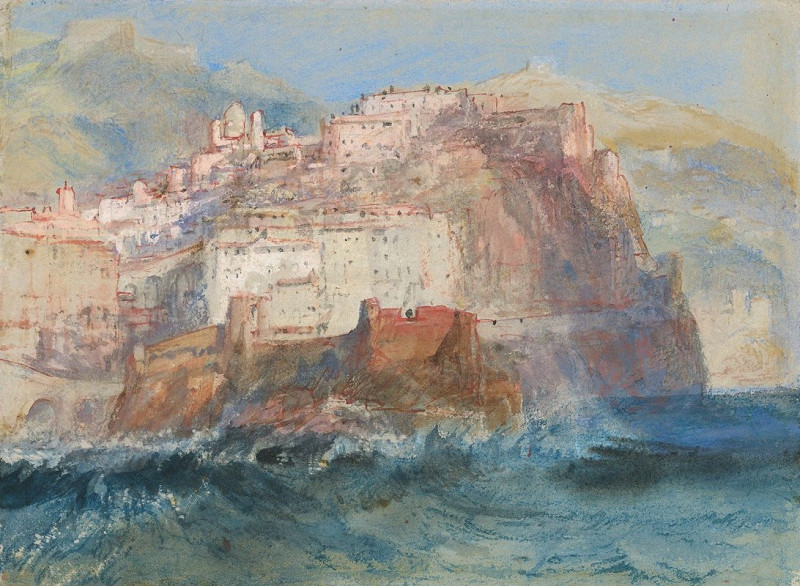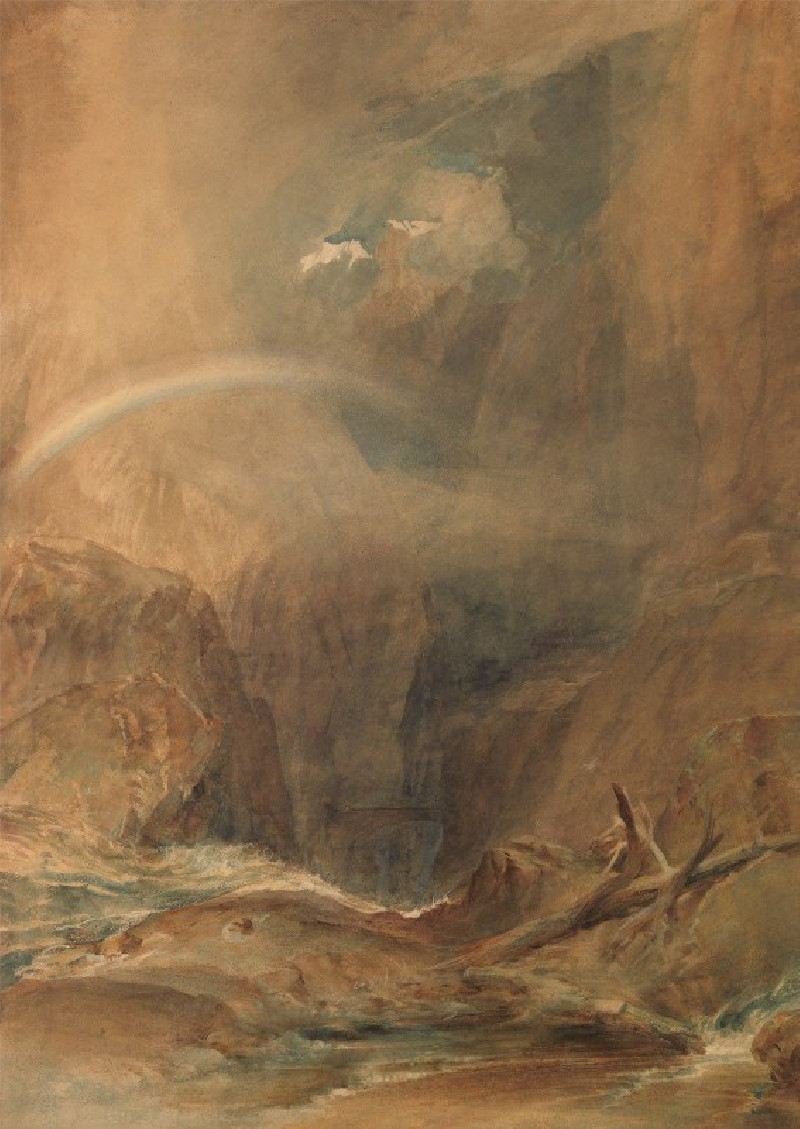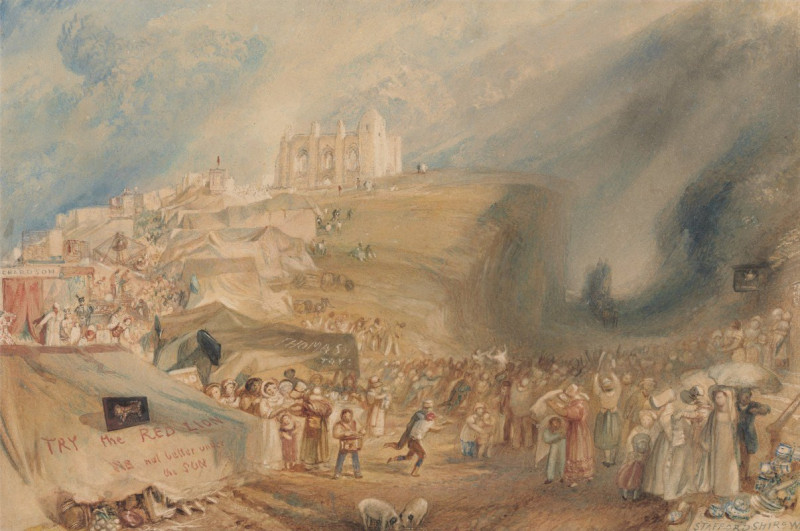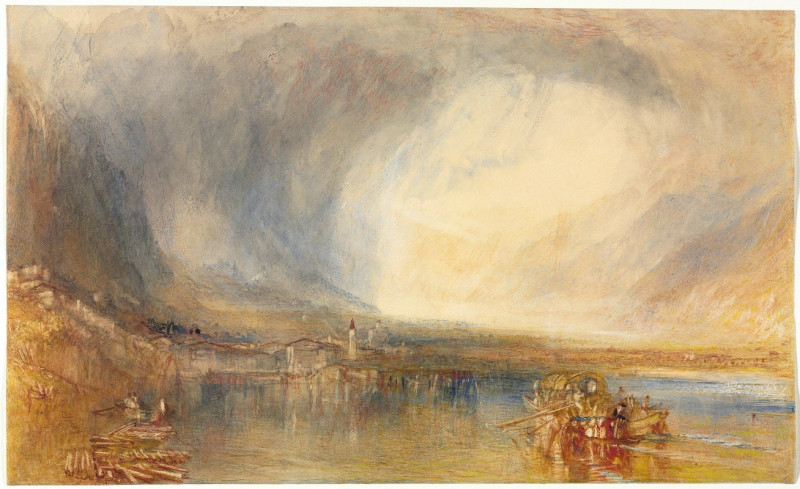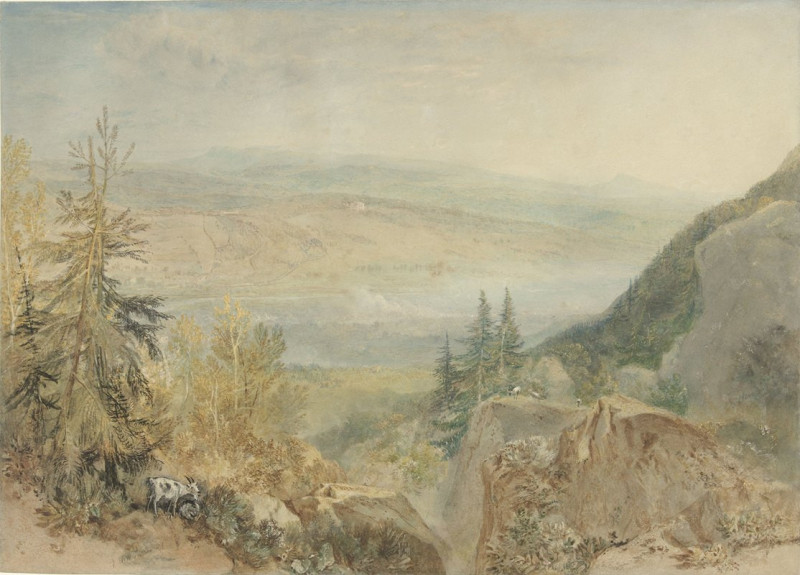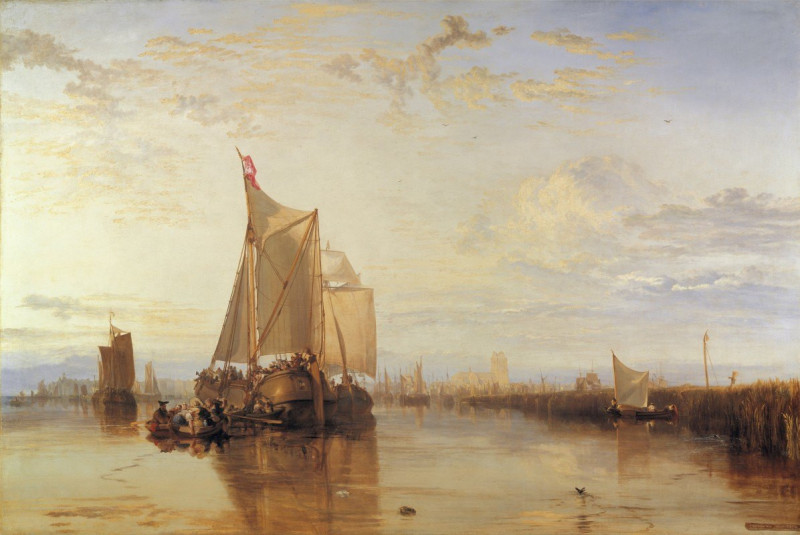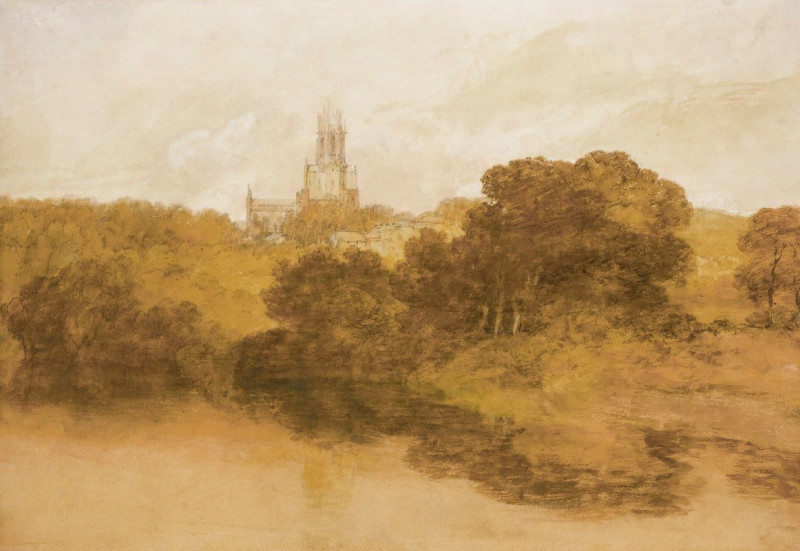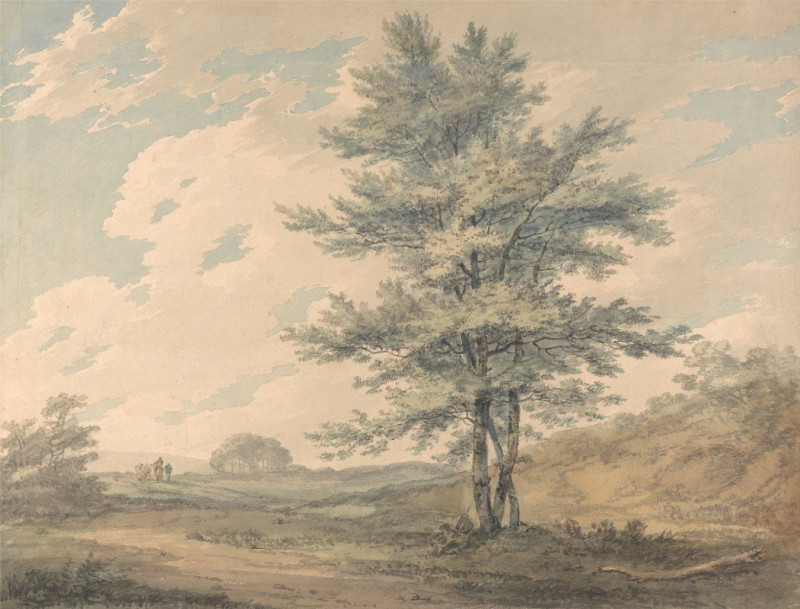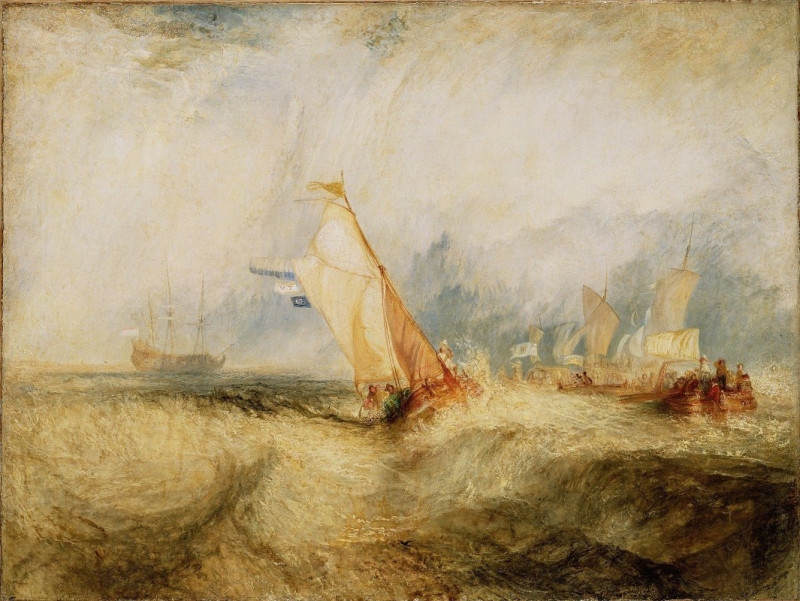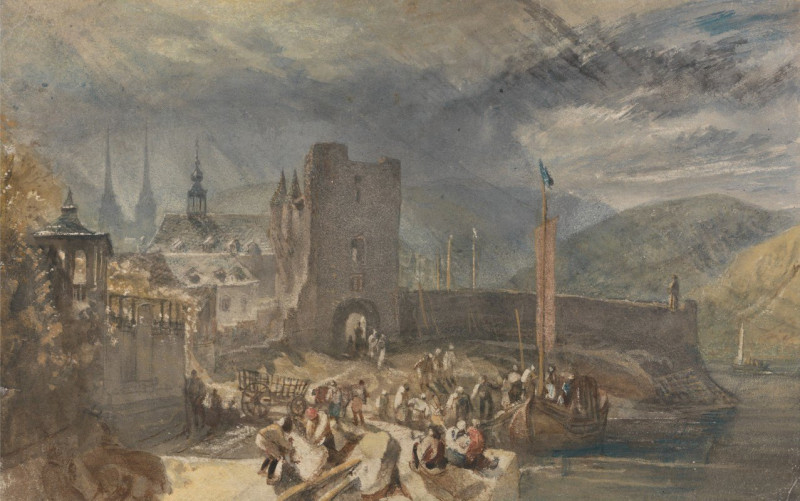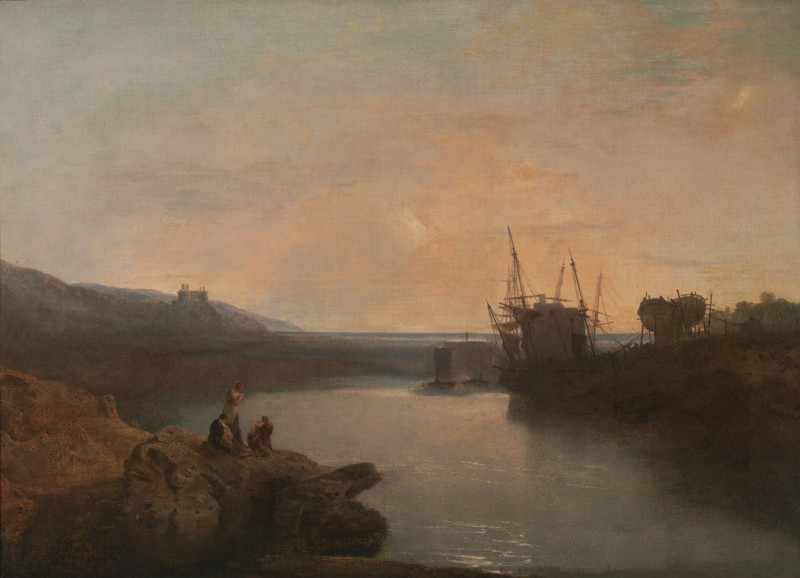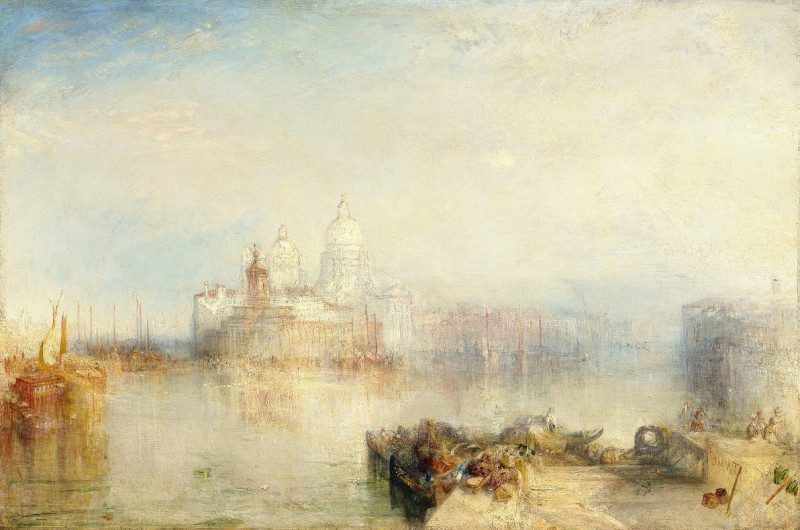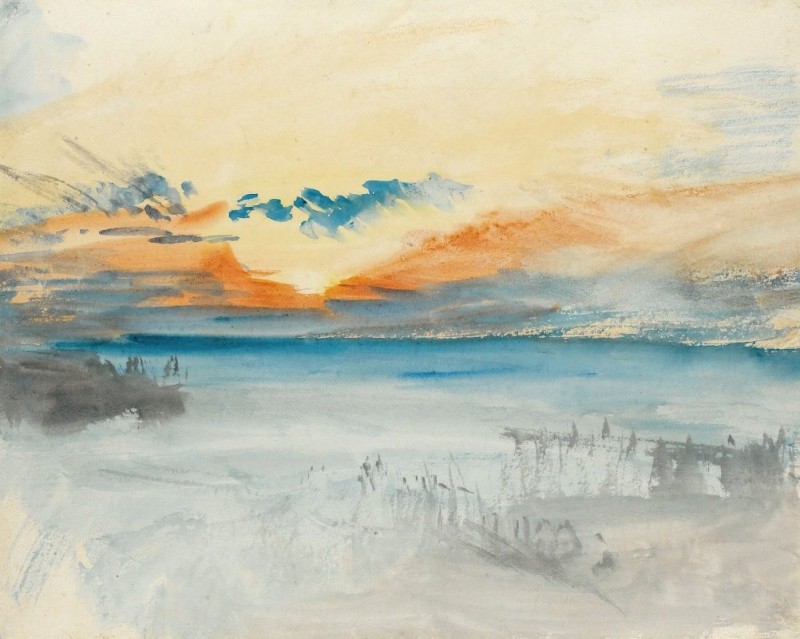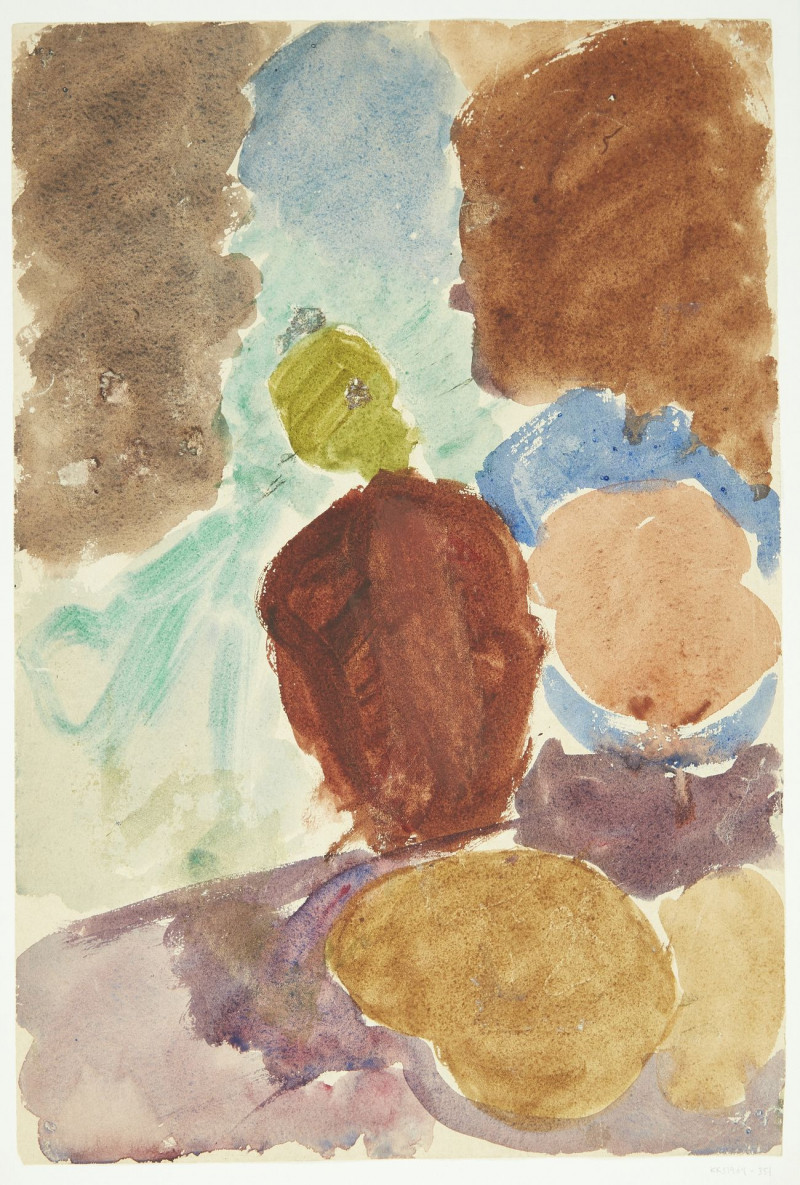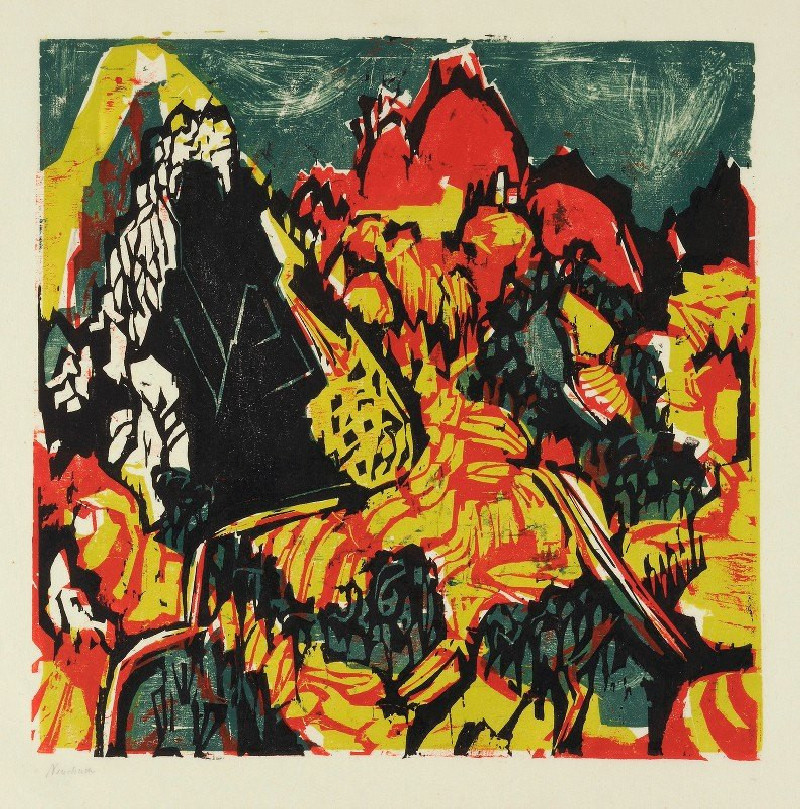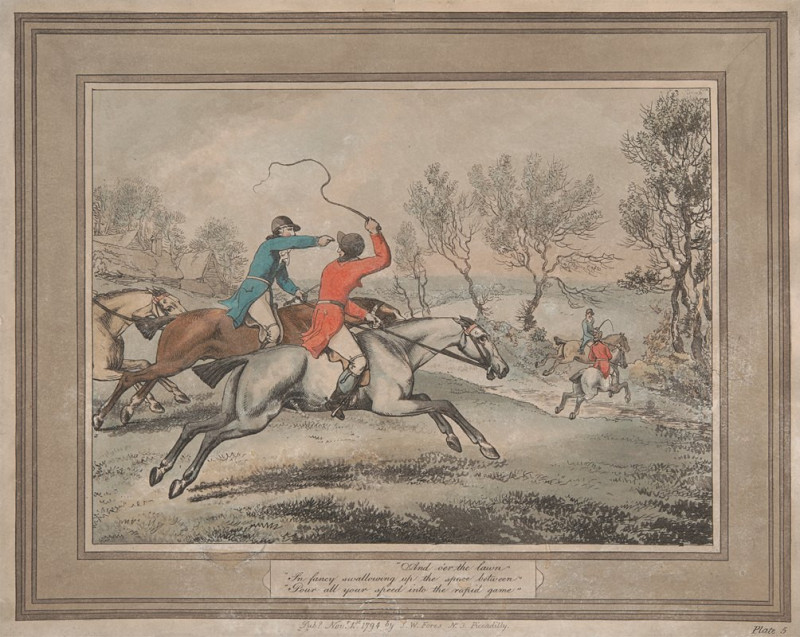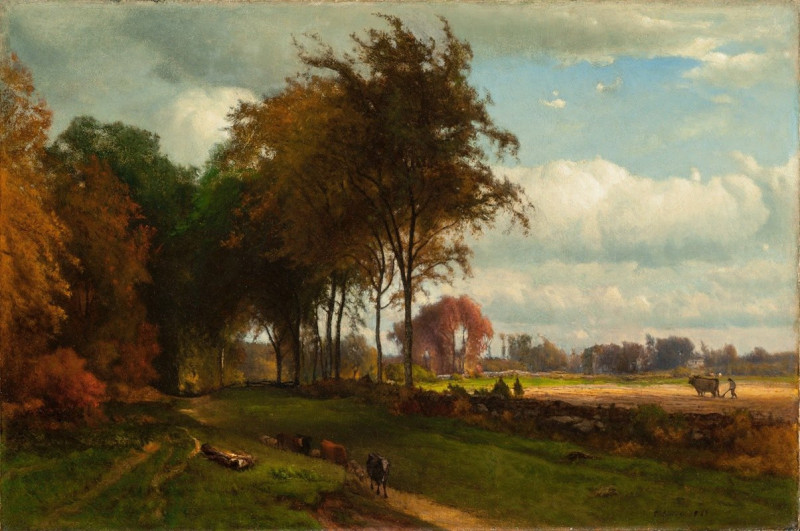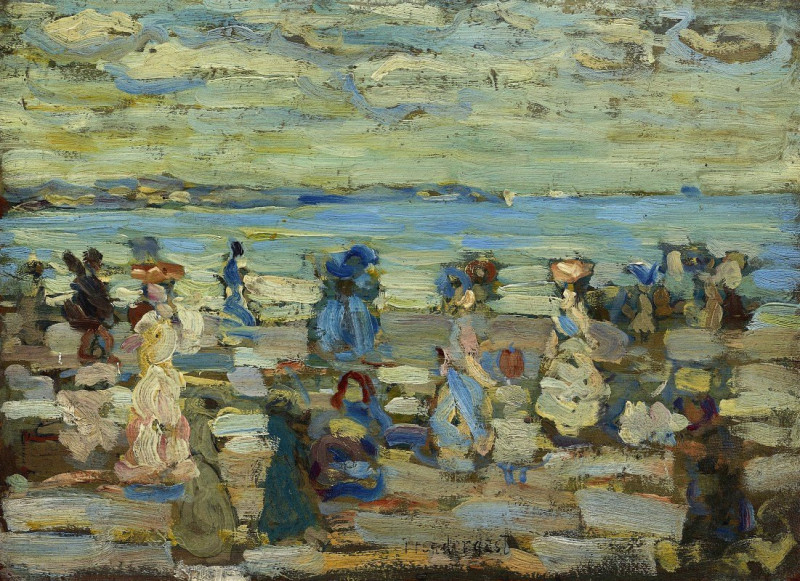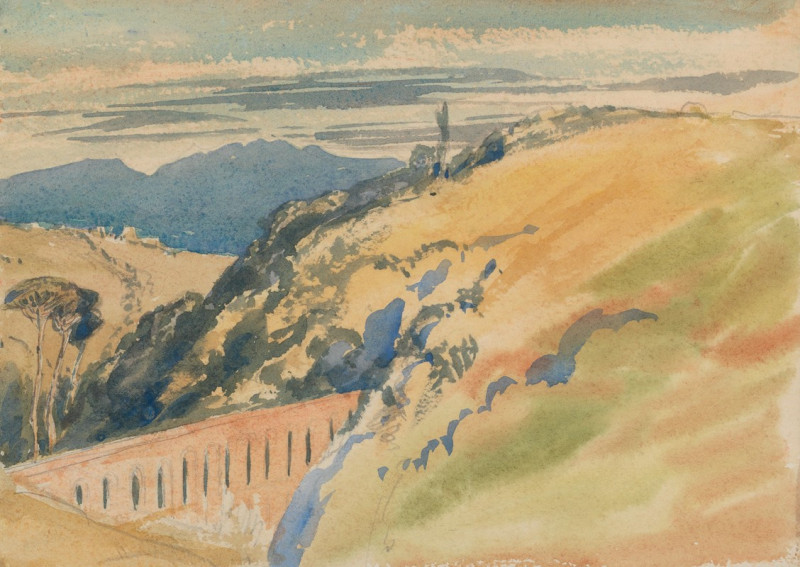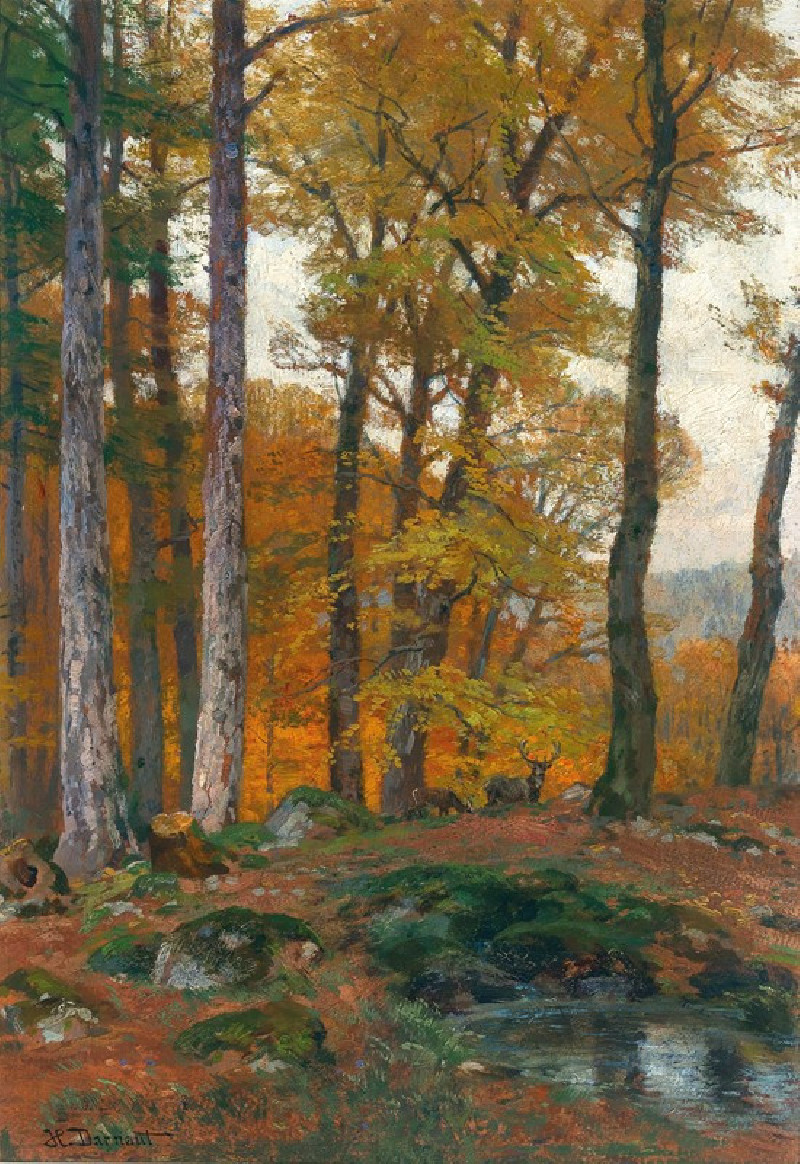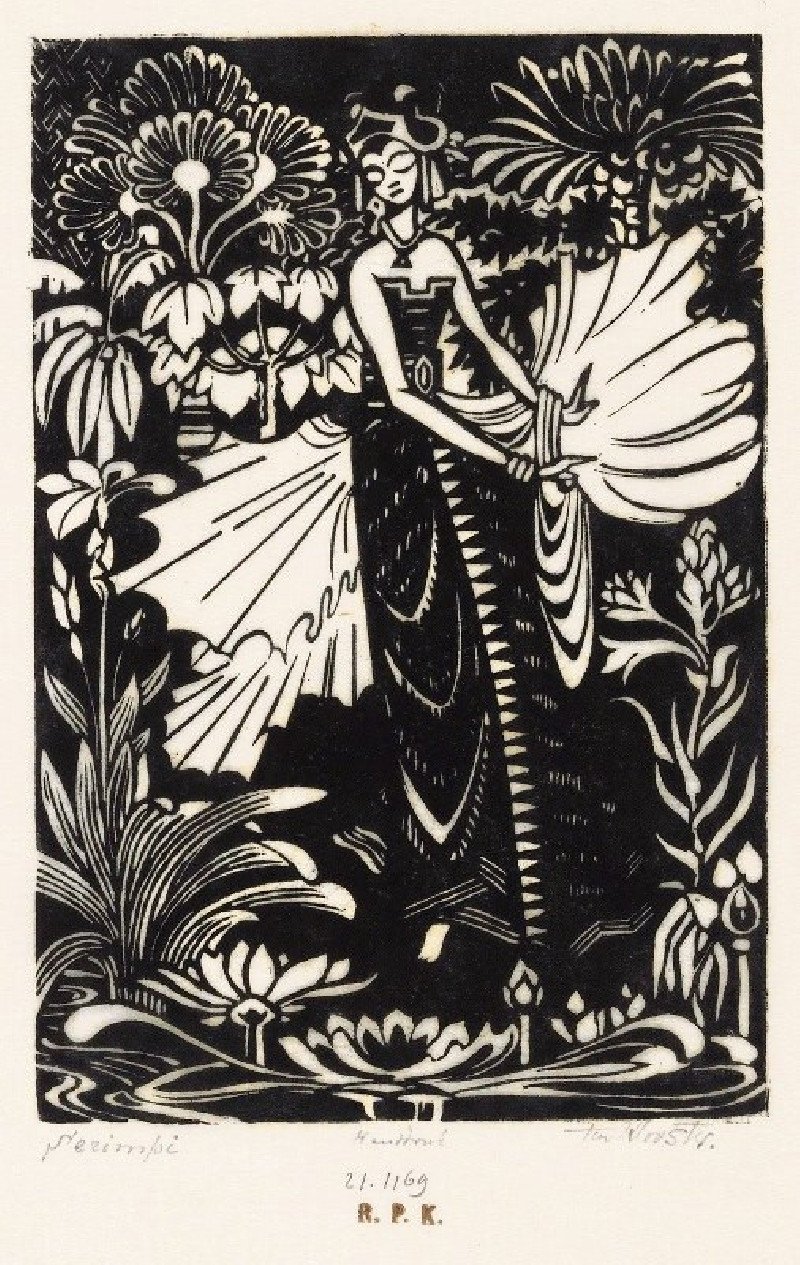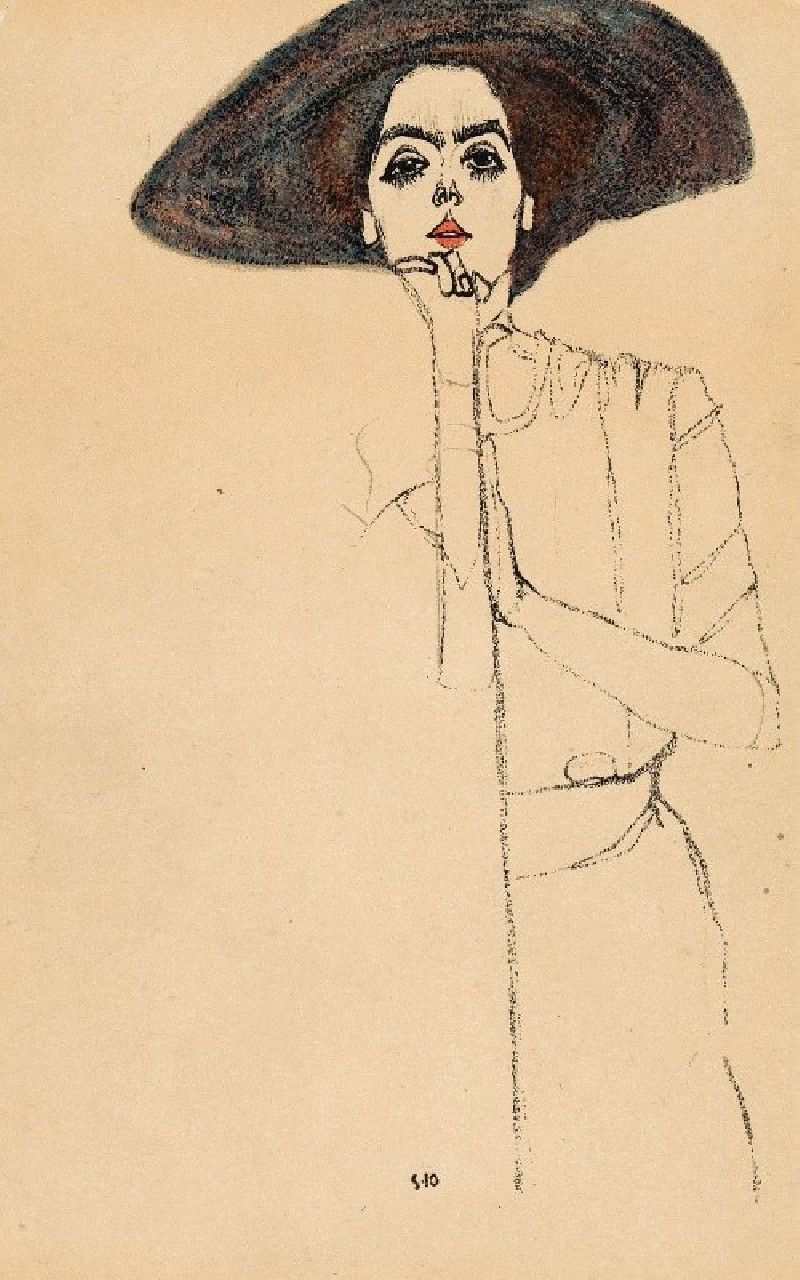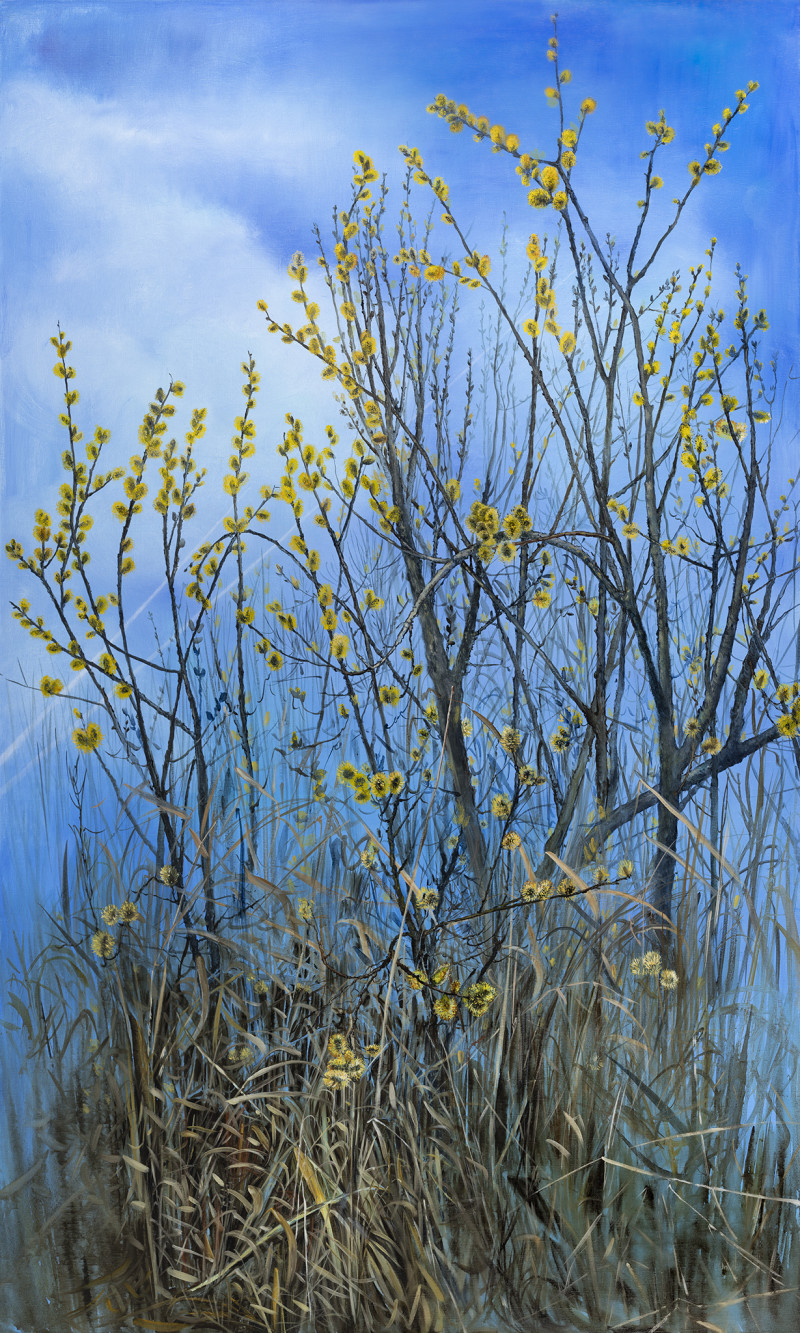Lausanne From The West (1816)
Technique: Giclée quality print
Recommended by our customers
More about this artwork
M.W. Turner (1816)Joseph Mallord William Turner's evocative watercolor, "Lausanne from the West," painted in 1816, captures the serene beauty and ethereal mystique of Lausanne, Switzerland, from a westerly perspective. This exquisite artwork highlights Turner's revolutionary approach to light and color, which characterizes much of his work.The painting presents a sweeping vista of the ancient city, shrouded in a luminous, hazy atmosphere that almost seems to fuse the city into the sky above and the landscape below. At the heart of the composition lies the silhouette of Lausanne’s grand architecture, depicted in faint, ghostly outlines that evoke the city’s historical significance and romantic allure.The foreground of the painting is vibrant with earthy tones and dynamic brushstrokes, depicting rolling countryside that leads the viewer's eye towards the city. Small figures, possibly local travelers or peasants, can be seen in this pastoral setting, adding a human element to the natural landscape. Trees and vegetation flank the composition, rendered with quick, expressive lines that convey the wild, organic growth of the Swiss terrain.Turner's manipulation of light and color creates a dreamlike quality that suggests a moment suspended in time, where nature and civilization exist in a state of peaceful coexistence. "Lausanne from the West" is more than just a geographical portrayal; it is a poetic interpretation that mirrors the tranquil beauty of the Swiss landscape through Turner's visionary eyes.
Delivery
Returns
Joseph Mallord William Turner RA, known in his time as William Turner, was an English Romantic painter, printmaker and watercolourist. He is known for his expressive colourisations, imaginative landscapes and turbulent, often violent marine paintings. He left behind more than 550 oil paintings, 2,000 watercolours, and 30,000 works on paper. He was championed by the leading English art critic John Ruskin from 1840, and is today regarded as having elevated landscape painting to an eminence rivalling history painting.

